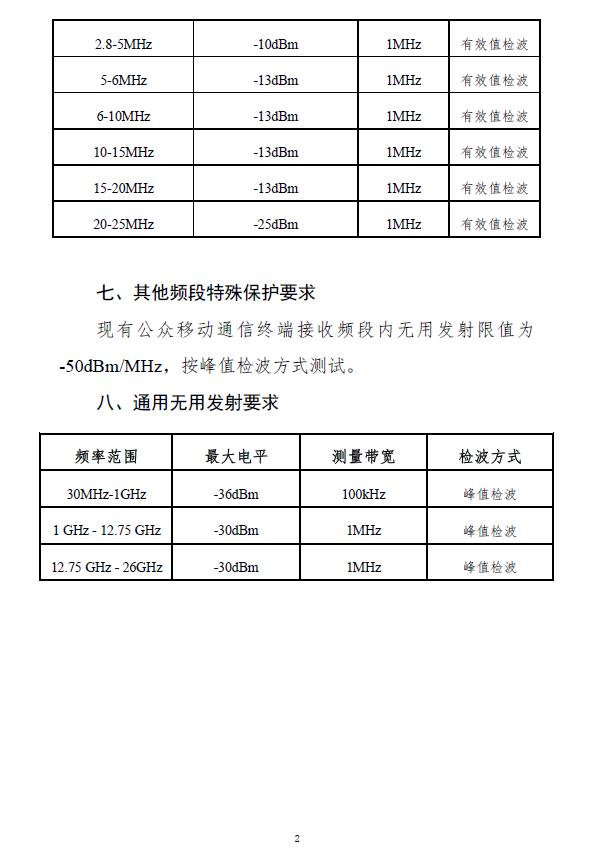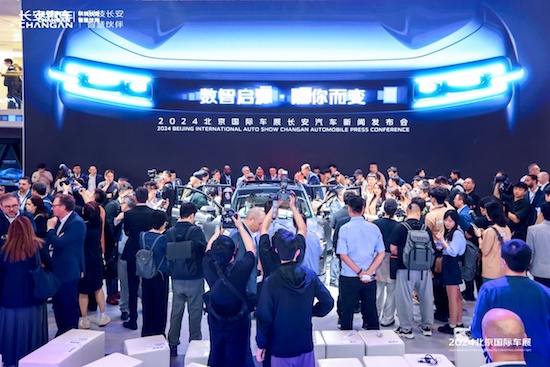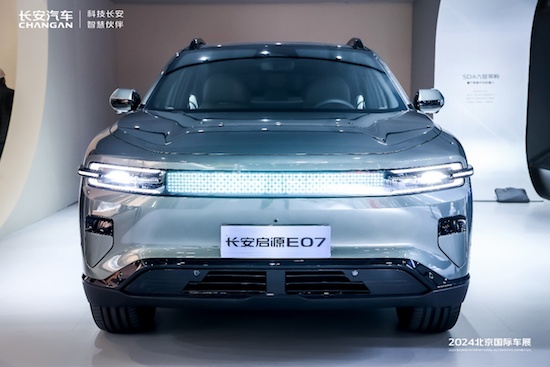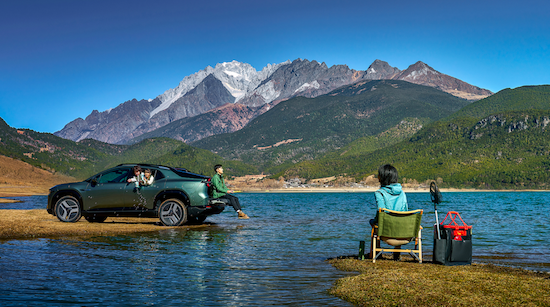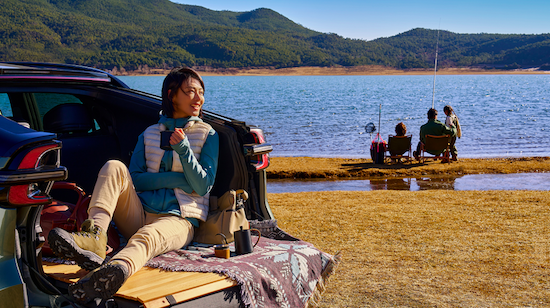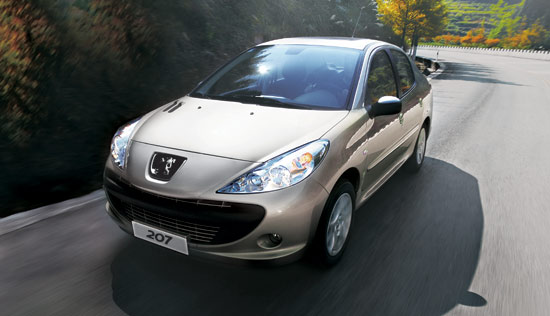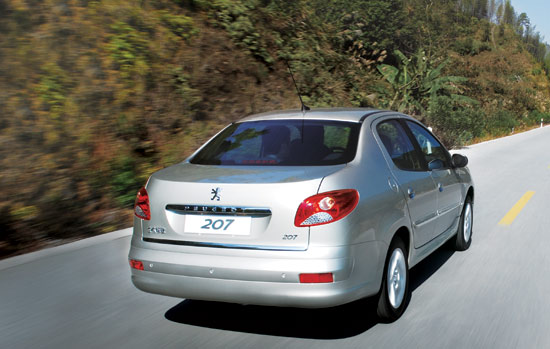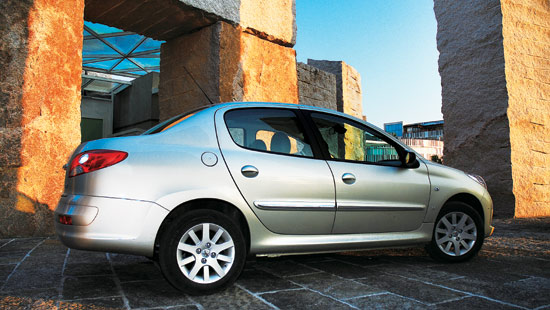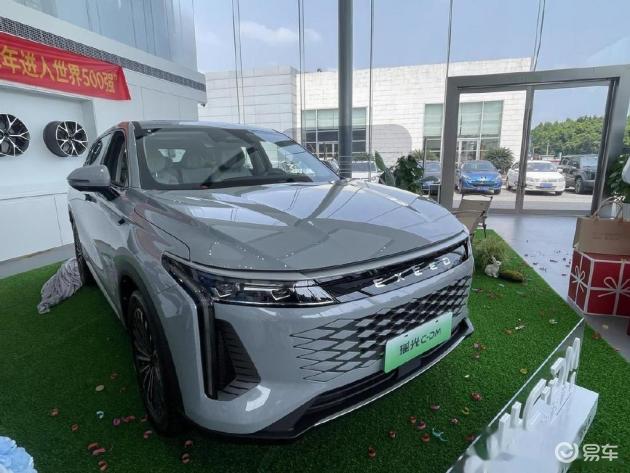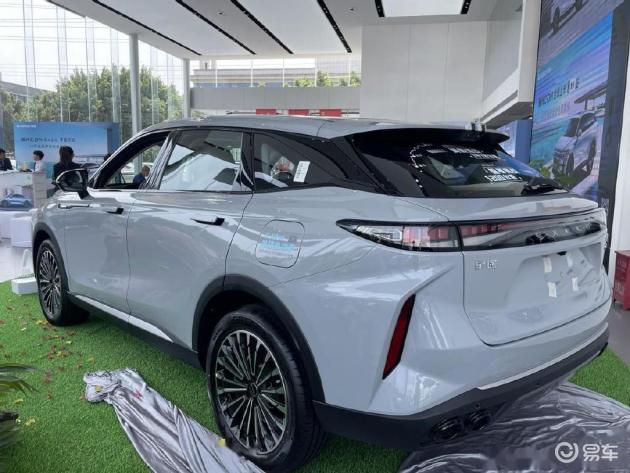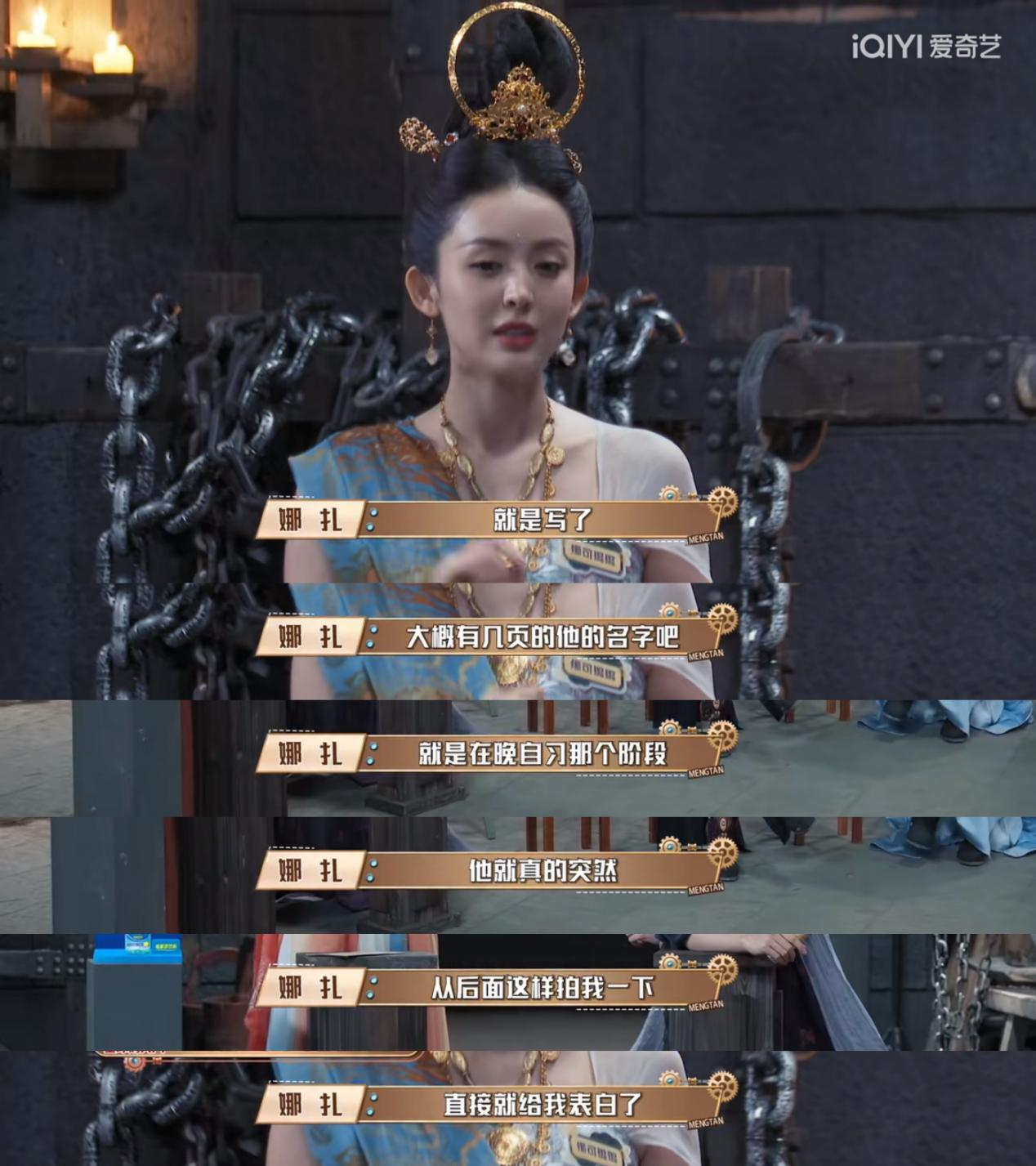Professor Li Zhuofen’s speech: How to spend all the hardships in the "epidemic" environment
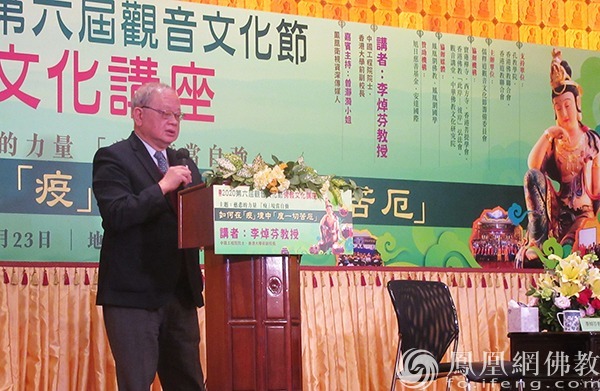
The following is a transcript of the speech:
Moderator Zeng Yiyi:Hello everyone! I’m Zeng Shuyi, the host of Phoenix Satellite TV, and welcome to the 12th lecture on Buddhist culture of the 6th Guanyin Cultural Festival, "How to spend all the sufferings in the epidemic area". We all know that life is bitter, but in this COVID-19 epidemic, people feel different levels of suffering. There is the fear of death after being infected, the pressure of fear of being infected to others after being diagnosed, and the fact that the epidemic has affected work, so how can we get through the pain of the immediate predicament? This kind of physical suffering and mental suffering is particularly obvious in this epidemic.
It has been a whole year since the outbreak of the COVID-19 epidemic. Over the past 300 days, we have encountered the greatest threat in our lives, that is, the troubles that Covid-19 has brought to human life and life. Although for thousands of years, human beings have been suffering from various disasters in heaven and earth, as well as epidemics, but we have spent it again and again, but human beings are forgetful. And this epidemic for us, what do humans remember? How to spend all the misery? Now, let’s invite Mr. Li Zhuofen, academician of China Academy of Engineering, former vice-president of HKU and professor of lectures, to give us a lecture today on "How to spend all the hardships in an epidemic area", and please welcome the president.
Professor Li Zhuofen:Hello everyone! Happy new year! Just after 2020, many friends feel that 2020 is a very extraordinary year; The Covid-19 epidemic has had a great impact on the whole world, a great disaster. If we look back at the history of the development of human society, we can see that in the past 2000 years, this virus and this epidemic occasionally occurred. Like the book we are reading now, there are detailed statistics on the impact of plague on human society. You can see that in the past 2000 years, there were often various plagues and epidemics that affected the development of human society.
For example, in ancient Rome, measles and smallpox killed almost 5 million people. You can also see that this plague affected different countries in different historical stages, from Europe to Latin America, to China and even to the whole world. The virus may be related to measles and smallpox, typhoid fever, plague or influenza virus.
Last year, pneumonia was mainly caused by the new coronavirus. If you look at the chart (on the right), there are quite a few people killed each time, some are millions, some are tens of millions. In the course of our human history, this plague also happens from time to time. In the process of the development of our human society, besides the plague, there are some other natural disasters, such as the well-known earthquake.
Take a look at our chart. Earthquakes also have a great influence, so in Europe, in the era of the Roman Empire, in the Middle East and even to China, and even to Peru and Southeast Asia in South America, the influence is quite severe, and the number of people killed each time ranges from tens of thousands to hundreds of thousands.
If we compare the plague with the earthquake, there is a difference. The plague does not pass in a day or two. Take the Covid-19 in front of us (for example), everyone has been affected for a very long time, almost one year has passed. What about the earthquake? It’s fierce, but it usually passes at once. Of course, its impact (very serious) and the reconstruction process will take time.
However, this kind of natural disaster, like an earthquake, has less impact time than the epidemic. Speaking of natural disasters, apart from earthquakes, we all know that floods often occur in our human society, and this one has also occurred since the ancient Roman Empire. Floods in the Yellow River and the Yangtze River in China are also frequent, as are floods in other countries, and the impact of floods is also very severe. Some floods killed tens of thousands of people, and some affected millions of people. Floods are also relatively short-lived, usually lasting a few weeks or a month. Of course, the process of reconstruction is still relatively long, but it doesn’t take longer like a plague.
We talked about these plagues, earthquakes and floods. How can our human society face these disasters? How to prevent these disasters? Let’s take a look at this plague epidemic. Generally, what we can do is to work hard to develop a vaccine, develop this vaccine, and then widely apply it. If we can widely use this vaccine, we can have an effect of preventing the spread of infection.
Looking back on vaccines against plague, we can see that smallpox was introduced in 1796, cholera was introduced in 1879, and others like typhoid, plague and measles. If you look at the time when this vaccine was developed, it actually appeared in the past about 200 years. This is the development of times medicine or modern medicine.
After we had these vaccines, they were widely used, and the threats of smallpox, cholera, diphtheria, typhoid fever and plague gradually decreased. It is not completely zero, but it can be controlled. Today, we are not too worried about the impact of smallpox on the whole human society, because we have a good vaccine, and so are other epidemics.
Modern medicine has made great contributions to controlling these plagues, but it has been more than two hundred years. We are now facing Covid-19, and we all know that in the past few weeks, different countries have made great efforts to develop this vaccine, and then it has been widely used in all aspects of society. They attach great importance to the development of this vaccine, mainly because of the serious impact of Covid-19 on the whole social economy. If this vaccine is not widely used immediately, it will be even worse for the economic situation of these countries.
Everyone knows that it was Britain that first used vaccines and applied vaccines. This vaccine was first used in Britain, and it has been used for almost several weeks now. The National Health Service says that more than one million people are vaccinated every week, so are other countries. We see that it is widely used in Russia, the United States, the Middle East and Latin America, and even the vice president and president-elect of the United States have been vaccinated.
Experts in the medical field expect that after the vaccine is used, our life will gradually return to normal. This is the opinion of our frontline experts. For example, professors from the medical school of the University of Hong Kong estimate that the epidemic situation will be gradually controlled in the second half of this year after the vaccine is widely used. We can’t return to zero immediately, but most of them can be controlled, and life will gradually become normal. Maybe in another year, the situation will be greatly improved. Of course, there may be some occasional outbreaks.
Our country has also made a lot of efforts in vaccine development. Now China’s vaccine is not only widely used in China, but also very popular in many countries around the world. There are hundreds of thousands of people, many of whom have been vaccinated, and there is no special infection. It will definitely be of great help for the future life to gradually become normal.
Looking back, what happened to Hong Kong? Director Chen (Food and Health Bureau of the SAR Government) said that he hoped that Hong Kong people would be widely vaccinated in the second half of the year, and he was also prepared to vaccinate all Hong Kong people with COVID-19 vaccine free of charge. It is estimated that the situation will gradually improve in the second half of the year, and society will gradually return to normal, so next year will be even better.
I just talked about the situation in Covid-19 and mentioned other natural disasters. How do we deal with other natural disasters? Earthquakes just mentioned, such as Wenchuan earthquake and Tangshan earthquake, have a very serious impact on human beings and the country. As a scientist, I should tell you truthfully, if you ask me, when and where will the next earthquake happen? Actually, we don’t know, really. Does that mean that I don’t know where the next earthquake will happen and how big it will be, so I’ll just sit and do nothing? That’s not true either.
We can use other methods to reduce the impact of earthquakes on our human society. How can we reduce it? This kind of work is called disaster reduction and prevention, reducing its disasters. Although we can’t accurately predict the coming earthquake, we can reinforce houses and various buildings. Reinforcement is to keep them from collapsing when the earthquake comes. Although the impact of the earthquake is still there, it will not collapse, that is to say, if we strengthen the house and improve its seismic standard, then it can reduce its disasters.
There are many houses in the earthquake zone now. Where is the earthquake zone? Japan, China, Tangshan and Northwest China, California, USA. We can use these methods to strengthen the house. Here are some concrete examples. This is some methods of earthquake-resistant building design. In fact, there are several methods. In our earthquake-resistant work, one of them allows us to design the house to be more elastic. It is more elastic. It can shake around during the earthquake, but it will not collapse. This is a method called "earthquake resistance", which means it can withstand this earthquake.
The second one is called "earthquake suppression". Earthquake control means controlling the earthquake, using steel bars and various reinforcement methods to control the amplitude of the earthquake, which is also a design scheme. Another scheme is called "earthquake-free". What does it mean? It’s the foundation, the foundation, which collects the seismic energy of earthquake waves. It’s a bit like driving. The car has a vibration control device. We also put this device on the building foundation, which can also reduce the vibration amplitude. That is, I can’t accurately predict when the earthquake will happen, but I can minimize the impact of the earthquake and prevent it from causing a major disaster.
Everyone knows that there are not many earthquakes in Hong Kong. Hong Kong is not an earthquake zone. Although there are no earthquakes, there are landslides. Landslides are called "landslides" in Hong Kong and "landslides" in the Mainland. Landslide and debris flow all refer to the same thing, that is, the hillside slides down. For example, in 1972, there was a big landslide on Baoshan Road next to the University of Hong Kong. When the landslide slipped down, it washed down a building with it and bumped into a part of the building below. Think about it, the impact of this disaster is still quite great. At that time, 67 people were killed, (known as the "618 disaster"). On the same day, in addition to the landslide on Baoshan Road, there was also a landslide in Xiumaoping, Kowloon. At that time, there was heavy rain, and 71 people were killed in Xiumaoping landslide. Together, almost 140 people were killed. This kind of disaster also happened frequently in Hong Kong that year.
In the mid-1990s, there was a team in the University of Hong Kong, and I was in charge of this work. We developed a method to reinforce and stabilize the hillside, which was called soil nailing. Soil nailing is called "soil nai" in English. At that time, we had several doctoral students engaged in various research work, some of them were indoor research, and some were doing various field experiments in the wild. We have done a lot of experiments on the slope of a road in Ma ‘anshan, and also some experiments on field soil nailing to strengthen the slope in Kadoorie Farm near the rural areas of the New Territories, to ensure that this soil nailing reinforcement method is effective and usable. After we have done a good job in this field, the method of soil nailing reinforcement has been widely used.
How to do it? First, drill a hole in the hillside, put a steel bar in it, then drill a hole to fill the surrounding space with cement, and then put a nail head on each soil nail. After the soil nail reinforcement, I tied the whole hillside together. The soil and rocks on this hillside are bound together, which plays a reinforcing role, and this hillside will not slide down. After it is reinforced, it will not slide down when it is tied together. I can also plant grass and trees outside the slope. I have a safe slope, which is safe after reinforcement. At the same time, my planting grass and trees also has an environmental protection effect. When you look outside, you can only see my grass and my trees, but you can’t see my soil nails, which means safe and environmentally friendly. This is also a creation of Hong Kong.
This method of soil nailing has been widely used in Hong Kong for more than 20 years. Driving soil nails into all slopes, this is the method of soil nailing reinforcement, and this is the whole set of tools. In the past twenty years or so, tens of thousands of slopes in Hong Kong have been reinforced by this method. After reinforcement, it looks like this. You see the grass, you see the tree, you can’t see my soil nails, because the soil nails are hit inside and you can’t see them. Before using this method, we temporarily put some cement slurry on the slope to separate the rainwater, but this method looks very environmentally unfriendly. In the 1980s, many people wrote to newspapers saying that this method was not environmentally friendly. Later, we adopted the method of soil nailing and greening, and it became like that (on the right).
At present, tens of thousands of slopes in Hong Kong are planted with soil nails (reinforced), which is done everywhere. This has been done for more than 20 years, and this method has been adopted everywhere. I think if you recall, in the early years, landslides often caused casualties in Hong Kong. In the past ten years or so, you have rarely heard this kind of thing, that is, you have never heard of how many people were killed in landslides. This story has been rarely heard, basically not. Over the past decade or so, there have been basically no casualties caused by landslides and landslides. Even this method is quite useful. This method was first developed in Hong Kong. Now in China, in other countries like Britain and Canada, this method of soil nailing is used everywhere, and then planting grass and trees is an environmentally friendly method. That is to say, the landslide disaster in Hong Kong in the past, now we can basically control and solve this problem through this soil nail reinforcement and this safe and environmentally friendly method.
Another natural disaster that everyone is familiar with is flood. China used to have frequent floods, and it is a big country with many floods in the Yellow River and the Yangtze River. If we look back, why are there frequent floods in China? In fact, there are two main reasons, one is that heavy rain has caused disasters, and the other is heavy rain. In July and August of the summer of 2020, there were several weeks of heavy rain in the southern part of China, which was a disaster caused by heavy rain.
Another important reason is that we have needed a lot of wood for building houses for thousands of years. People need wood to build a house, and the emperor also needs a lot of wood to build a house. Qin Shihuang built "Epang Palace". How do you write Du Mu’s poems? "A Fang goes out, Shu Shan is bald" is bare "bald". That is, if you build a "Epang Palace" of Qin Shihuang and cut down all the mountains (trees on it) in Sichuan, then the hillside will become bare without planting any more. It’s bare and the vegetation is gone. If it rains a little, it will wash all the sediment on the hillside into the river below. After rushing into the river, the water generally flows at a higher speed in the upper reaches of the river, that is, it flows very fast, and the sediment will not settle.
In the middle and lower reaches, the Yangtze River reaches the Jianghan Plain in Hubei, the Jianghuai Plain in East China, and the Yellow River reaches the North China Plain. In the plain area, the velocity of water is relatively low, and the sediment will settle down when it flows slowly. When the sediment settled, it silted up the channels of the Yellow River and the Yangtze River, and the sediment piled up on the riverbed, slowly raising the riverbed, and after raising it, it was higher than the surrounding area.
Let’s take a look at it later. It is more than ten meters higher than the Yellow River in some places around, and the Yangtze River may be about 5 to 7 meters higher than the surrounding area. Because of this, there are often floods. Because the riverbed is high, when the rainstorm (coming), the water level of the river overflows the riverbank, and there is another big flood around it, which may be affected every time. There may be tens of thousands to hundreds of thousands of people killed. How can we face the threat of such floods?
We can’t avoid the rainstorm, even if it rains, you can’t help it. It will still rain, but we can use water conservancy projects to control and regulate the flow of rivers, which can be done. For example, in July and August last year, the whole southern region, especially Sichuan, had almost a year’s rainfall in two or three days. Not only did evening rain rise in the autumn pool, but all the rivers in Sichuan experienced a severe water rise. However, we can adjust the water levels in the upper reaches of the Yangtze River and the rivers in Sichuan through the Three Gorges Dam of the water conservancy project.
Through the Three Gorges Project, we will not let the flood suddenly flood into the Jianghan Plain downstream. What’s in Jianghan Plain? There are Wuhan and Jingzhou, all on the same plain. If this flood comes down, it will be terrible, and tens of millions of people will be affected. Through these water conservancy projects and the Three Gorges Dam, we control the flow, that is, we should stop it from rushing down immediately, and then release it slowly. When you put it slowly, control the flow under the condition of control.
I used to have many friends who lived in Wuhan. In 1998, when there was a flood in Huazhong University, almost 1 million people went to protect the embankment in Wuhan. This embankment is not only for ordinary people, but even the secretary and mayor went up and the Prime Minister came down to help. Everyone has heard about these situations. Last year, although it rained heavily in Sichuan for several weeks, the water level was quite high, and there were many flood peaks, but the flood peaks were also controlled by the Three Gorges Dam water conservancy project. It was slowly released step by step, and my friend who lives in Wuhan was also by the river, but he was enjoying the cool by the river, and he didn’t do any dike protection work. Even this water conservancy project can still work, and the flood peaks can still be safely spent.
More importantly, what our country has done in the past is that since the flood in China in 1998, we have rebuilt the mountainous areas in the west of China, that is, the vegetation forest areas in the upper reaches of the Yellow River and the Yangtze River. Rebuilding vegetation can (can) reduce soil erosion, reduce river sediment and improve the ecological environment. I’ll tell you later. I just mentioned that for thousands of years, due to the need of building houses and heating in winter, we often went to the mountains to cut down trees. After cutting, we didn’t plant them again. As a result, the vegetation on the hillside disappeared, and the topsoil was exposed on the surface. When it rained, the sediment was washed into the riverbed.
What about the result of cutting down trees? Almost all the trees in the western mountainous areas have been cut down. Before you traveled to the Loess Plateau, you would see the bare Loess Plateau, just like this. Sediment rushed into the river, and the sediment concentration in the river was relatively high. The Yellow River is even worse. Why is it called the Yellow River? In fact, many rivers in China have a relatively high amount of sediment, such as Hongshui River, Qishui River and Honghe River. Why do you call it red and yellow? That’s why its sediment concentration is particularly high.
As I mentioned just now, when the sediment rushes to the river channel, it raises the riverbed. The riverbed of the Yellow River is 13 meters higher than the surrounding ground. This means that the Yellow River is in Henan and in Kaifeng. There is a famous Kaifeng Tower in Kaifeng. You can see that the riverbed is more than 10 meters higher than the surrounding area. In this case, we call it "hanging river". It means that the river hangs in the sky, hanging in the sky.
The Yangtze River is not much better. This is a situation in the middle reaches of the Yangtze River, near Jingzhou. When you see Jingzhou, it is all above it. There is a Jingzhou levee, and there is a house below. The local people say that "people walk at the bottom of the river and water flows on their heads". This is called "Jingjiang Hanging River", and Jingjiang is the name of the Yangtze River in Hubei. The Yangtze River is called Chuanjiang in Sichuan and Jingjiang in Hubei, which are actually the Yangtze River. You see this situation, where is Jingzhou section? You see the land next to it, which is the middle reaches of the Yangtze River. After crossing the street, it is basically a plain area.
You can think about it, this river is above your head. If it rains heavily and the water overflows the embankment, it will definitely be another big flood. In the history of China, if you look at some records of the Ming and Qing Dynasties, there are often such big floods, and there are tens of millions of people (affected). This is a cross-sectional view of the north and south, and (the far right) is the Yangtze River. The red section of this topographic map is calculated in kilometers, and the other is in meters. But you can also see that the Yangtze River is protected by a riverbank, and the riverbed of the Yangtze River is about five or six meters higher than the surrounding area.
The same is true of Hanshui River, the largest tributary of the Yangtze River in Central China, and the same is true of Dongjing River, a tributary of Hanshui River. That is to say, the big rivers and riverbeds in China are generally higher than the surrounding areas, and they are all suspended rivers, and every time it rains heavily, there is a threat of floods. It is for this reason that many water conservancy projects have been built since the founding of the People’s Republic of China. Like the Three Gorges Project on the Yangtze River and the Xiaolangdi Project on the Yellow River, they can basically control and regulate the flow. When the flood peak comes, it controls the flow well to prevent the flood from leaking to the downstream great plains at once.
After the flood in China in 1998, it was Premier Zhu Rongji’s time. He discussed with you how to solve the flood threat in China for a long time. At that time, he adopted the suggestions of several academicians of the Academy of Engineering. At that time, I also took part in some work in this field. We suggested that we should not cut down trees in the middle and upper reaches of the Yellow River and the Yangtze River in the future, and rebuild the vegetation in the central and western regions and the forest areas in the mountainous areas in the central and western regions.
After 1998, the vegetation reconstruction project was started in the middle and upper reaches of the Yellow River and the Yangtze River. The vegetation reconstruction project is literal. We generally call it the "Green Long March", which is to rebuild trees in our mountainous areas from generation to generation. In the western mountainous areas, including the Loess Plateau and Inner Mongolia Plateau, many deserts and deserts have replanted trees for more than 20 years. If you go to the Loess Plateau today, you will see trees planted in many places, which is different from before.
After planting trees, the problem of soil erosion will be gradually reduced. There are trees on the hillside to hold all the sediment, so that the sediment will not flow to the river bed, thus reducing soil erosion. The sediment transport capacity of the Yellow River and the sediment concentration in the Yellow River water have greatly decreased in the past twenty or thirty years, mainly because trees have been planted, and soil erosion has been reduced after trees have been planted.
If you travel to the Yellow River today, if we can go back today, you can go to Hukou Waterfall. The water in the Yellow River is much clearer. The same is true of the Yangtze River, where the sediment concentration has dropped significantly. This was observed at a hydrological station in the middle and lower reaches of the Yangtze River, and the annual sediment discharge has obviously decreased significantly.
I just said that in the past few decades, trees have been planted everywhere in the "Green Long March", including in desert areas and the Loess Plateau. If you look at the national forest coverage rate, it has tripled from 8% in the founding of the People’s Republic to about 23% today. This is a very big growth. After planting trees, the whole ecological environment has gradually improved. According to the statistics of the United Nations, the annual increment of forest area in China ranks first in the world, while other countries combined can’t keep up with the increase of forest coverage in China. This work is very remarkable. Of course, it is the result of continuous efforts of generations, and its impact on the whole ecological environment is very clear.
Just now, we talked about plagues, earthquakes, landslides and floods. These are called natural disasters, and such natural disasters continue to occur. We live on the earth, and the earth is our home to settle down. The nature around us is beautiful, but it also has an impermanent story, whether it is nature or the earth. If we look back at history, after every disaster and plague, we human beings are born through robbery. After learning from one thing, looking back at the development process of human society, we have developed on the basis of constantly overcoming difficulties and disasters.
In the face of disasters and epidemics, we need to do a lot of disaster reduction and prevention work and anti-epidemic work. This mainly depends on scientific control of this plague, mainly on modern medicine. We are in this "epidemic" environment, like for a long time in the past. As human beings, we inevitably feel anxious. Therefore, in addition to doing a good job in epidemic prevention, disaster reduction and prevention, there is also a very important need for peace of mind. How to make us face these disasters more calmly is the need for peace of mind.
But how can we reassure everyone in a disaster and an epidemic? I suggest here that we can borrow some religious philosophy and humanistic care from our eastern civilization. For example, we can refer to it. Before the disaster last year, you may remember that there was an Asian financial turmoil about 20 years ago. The Asian financial turmoil also had a great impact on Hong Kong at that time. Let’s take this as an example. If you look at this kind of news in Hong Kong newspapers in those days, what kind of big stock market crash broke out, causing many shops to stop operating, and many people became negative assets. What is "negative assets"? That is, I borrowed money and went to the bank for a loan to buy a house. The house I bought may be 10 million yuan, and the bank may lend me 7 million yuan. When the Asian financial turmoil comes, the price of that house may drop to 5 million yuan, so the money I sold the house is not enough for the bank to repay the loan of 7 million yuan, which is what I mean. Many people commit suicide because they can’t stand it.
You may remember that in the face of this adversity at that time, we had an old gentleman, a master of Chinese studies in Tsung i Jao in his 90s. Rao Lao knew that many people in Hong Kong were very unhappy at that time, and he used his methods to reassure everyone and send them a blessing. He is a great scholar and a great calligrapher. He is the president of Hangzhou Xiling Printing Society. He wrote 260 words of Heart Sutra in calligraphy. You can see that every word of Prajna Paramita Heart Sutra is quite big. At that time, after he finished writing, he hung it on the wall, and every word was written in such a big size. He asked us to help him carve this 260-word Heart Sutra on 38 pieces of wood and put it in the Heart Sutra Simple Forest in Ngong Ping, Lantau Island. Now when we go to Ngong Ping, we will see the "Heart Sutra Simple Forest", and this is how the "Heart Sutra Simple Forest" came about.
Rao Lao also went to see the Heart Sutra when it was built. Why did he write this calligraphy of Heart Sutra? Rao Lao feels that you want to make people feel at ease. You can’t just say a few words and people will feel at ease. The best thing is for us to reflect on it and study it. A Buddhist sutra full of wisdom like Heart Sutra, from which you can set your mind at ease, was Rao Lao’s idea at that time.
Why do you say that? What is the magic weapon of the Heart Sutra? I’ll give you a supplementary explanation here. The Heart Sutra is actually not long at all. It is divided into two sections. The first paragraph is actually just a few words, very short. In the first paragraph, it is said that "when you look at the Bodhisattva, you can walk deeply like Paramita for a long time, and when you see that the five aggregates are empty, you will suffer all kinds of hardships". It is written in classical Chinese, which seems not easy to understand. If we use modern words, it’s probably like this. In the vernacular, it means "observing the Buddha". Who is the Buddha? Viewing from the Bodhisattva means representing the "Guanyin Bodhisattva" next to it. Why is he called Guanyin Bodhisattva and Guanyin Bodhisattva?
In fact, it is very simple. Buddhist bodhisattvas practice both compassion and wisdom. In Buddhist language, this is called "double luck of compassion and wisdom". Both compassion and wisdom are practiced at the same time and are used in our lives. Bodhisattva If he practices compassion, like Guanyin Bodhisattva, he practices compassion to help the poor, and he will help you solve your immediate difficulties whenever you need it. That is, when you hear that you need him, he will come to help you. This is (yes) hearing about it. So when he practices compassion, we call him avalokitesvara. It is when he hears the sound of salvation and shows compassion that we call him Guanyin Bodhisattva.
In addition to practicing compassion, he also practices intelligence. How to cultivate wisdom? He practices wisdom in deep meditation, that is, through deep meditation, he can observe everything in the world, and everything has its reasons, causes and causes. Is that everything will not happen for no reason, there are his reasons behind it, and it will not happen for no reason. He saw this truth, he realized this truth, he realized this truth. Realizing this truth, he can clearly find out the causes behind everything, and he can understand the reasons behind everything, and there is also a process of karma birth and death. That is, if this reason exists, it will happen; If this reason did not exist, it would not have happened.
Let me give you an example. Don’t say something as serious as this epidemic. It’s winter now, and it will be Spring Festival in two months. Spring, what’s wrong with spring? Spring is blooming! You see a tree with flowers growing. Why do flowers grow? It is spring that comes. There is sunshine, rain and dew, sun and soil, and these conditions are all met. In spring, the temperature is warmer and there is rain. Under this condition, the tree in front of us will grow flowers, maybe a peach blossom. We like peach blossoms during the Chinese New Year, and when we see them, we come out at that time.
Why doesn’t it come out in the middle of winter and December? It is the twelfth month of winter that does not have the conditions for it to bloom. After two months, spring has come, and spring blossoms are the conditions for flowering. Everything, including the flowering of a tree, has its conditions. With conditions, it will blossom, but without conditions, it will not. Of course, I can build a greenhouse, and that’s another way. Is a simple thing, like flowering, it needs flowering conditions, flowering conditions are sunshine, rain and dew will bloom, after this condition is gone.
So what does it mean to say "karma is born and died"? That is, if conditions permit, it will blossom; if conditions do not permit, it will not blossom, as simple as that. The epidemic is the same! A condition makes the epidemic appear, and it will be there. Earthquakes and natural disasters are the same! Natural disasters also have their reasons. If conditions change, it may not happen again. Then you understand that everything has its reasons and karma behind it, so you may face it more calmly.
For example, if I am a student and my exam results are not good, then I must be very upset. No (good) may also have a reason. Why didn’t I do well in the exam? Didn’t get into my favorite university? One of the reasons is that I may not study hard, or I can’t study properly, that is, I can’t read my book effectively (efficiently). You don’t study well and you don’t study hard, which is one of the reasons why you can’t get into the university and your favorite university.
You’ll understand when you find out the reason, and it doesn’t mean you just sit there all the time. Think about it, I didn’t study hard, so I should study hard next time. I study hard, I improve this condition, I improve this karma condition, then I study harder next time, and I can be admitted to my favorite university. That is to say, you understand the reasons behind everything. If you improve this condition, you can do better. This is the reason.
If we understand every situation, every epidemic situation and epidemic situation, we understand the reasons behind it, find out its reasons and find out the solutions, we can face it more calmly, and you will be more calm in your heart, so you will not be too upset and you will be able to tide over the difficulties. The meaning of "going through all the hardships" is to get through this difficulty. To get through this difficulty, you don’t just sit there, you just (want to) find out the problem and try to solve it. Solve it, and you will be able to tide over the difficulties. This is a short first paragraph of the Heart Sutra, which may only be more than 20 or 30 words. We call it "karma view", the most important truth of Buddhism, and write this "karma view".
If you look back at these words, it’s only 25 words. These 25 words are included, telling you that there are reasons and conditions behind every suffering. If you change this condition, you can solve the problem and you can "get through all the hardships". That’s what it means.
I just said that this is the "karma view" of Buddhism. According to legend, it is one of the two truths that Sakyamuni realized under the bodhi tree that year. The first one is called "karma view", which is the truth I just talked about in the first paragraph of Heart Sutra. Second, another important truth that the Buddha realized under the bodhi tree in those days was called "four truths view". Let me introduce the "four truths" here. In Buddhist language, the "four truths" are suffering, gathering, extinction and Taoism. If we use our modern language, what is "suffering"? Suffering means that there is a problem, and trouble comes, which makes you feel very painful and unhappy. This is "suffering".
What does "set" mean? It is suggested that instead of complaining, you should try to find out the root of the problem and think calmly. Why did this problem appear? Find out the root of the problem. For example, I didn’t do well in the exam and didn’t go to college, which made me very painful and annoyed. This is "bitter". "Set", find out the root of the problem, the root of the problem is that I didn’t study hard, and my method of studying is not right. These are all, and this is the root of the problem. Find out this "set".
It is not enough to find out the "set", but the third step is to "destroy". "Extinction" means finding a solution to the problem. I know that my grades are not good, and the main reason is that I don’t study hard. I always play computer games and don’t study well. This is the problem. After finding out the root cause, I know that if I want to get better grades, I can only work harder. Then the way to find out this problem is to study harder and study my book well. This is "extinction", which means reducing this problem.
The meaning of "Tao" is to carry out this (method), stick to it, and implement the solution to the problem. I will study hard in the future, but I don’t have the final say. I have to implement it seriously. I have to stick to it to get good grades. Bitterness, concentration, extinction and Tao are actually the "four steps" to solve the problem; Is to find out the problem first, find out its reason, find out the solution, and conscientiously implement the solution, that is, suffering, concentration, extinction and Taoism.
No matter what problems you encounter in your life, you can use this "four-step" method to solve them. If we are doing scientific work, this is also a basic step of scientific methodology, which is applied to those natural disasters and major earthquakes I just mentioned. The Wenchuan earthquake brought great pain, and about 90,000 people were killed. This is a great pain. How to solve it with the "four truths" of "suffering, gathering, extinction and Taoism"?
Earthquake is "bitter", I find out its root. The root cause is that the Longmenshan fault in central Sichuan, that is, the fault on the southeast edge of the Qinghai-Tibet Plateau, is often dislocated and displaced, and the displacement has caused the earthquake. Just now, we don’t know when there will be another earthquake, but we can improve our seismic standards and do a good job in building reinforcement projects, which can reduce its damage and disaster; This is a process of suffering, gathering, extinction and Tao.
Earthquake is like this, tsunami is like this, you find out the reason and try to solve it. The same is true of floods. I just reported to you that the root cause of floods is that we cut down trees, rain heavily, and soil erosion. Then we should rebuild vegetation and improve our ecological environment now. This is the method of prevention and control, and it is also the method of extermination and Taoism. It is that every disaster and every problem can find some solutions.
Many years ago, we had a SARS, and we also used an epidemic prevention method, that is, we found the cause of this SARS, that is, there was a non-coronavirus or something. Now it’s the same in COVID-19. You find the root cause and try to find a solution, which is to develop vaccines. Find out the root of every problem, find out its solution, and try to implement this method. That’s it.
If people want to feel at ease, the first thing is that you should be wise first. This is what the first paragraph of Heart Sutra says. You must "see that the five aggregates are empty" before you can "overcome all the hardships". The meaning of "seeing the five aggregates is empty" means that you should find out the root of the problem and understand what is behind everything. If you can be so wise, you can feel at ease, and you can live in the present and live in the present.
Buddhism often talks about the phrase "live in the present". What does it actually mean? That is, if you can feel at ease, you can concentrate on what you need to do right now. For example, I am a teacher. I am a teacher. I concentrate on doing a good job as a teacher and teaching my books well. If I live in the COVID-19 epidemic, as I have lived in the past almost a year, I will concentrate on the epidemic prevention work, do my part, wear my mask, and I will do the isolation work. These tasks need to be done. This means "living in the present".
If I’m unlucky and I’m sick, I still have to concentrate on doing the patient’s job, cooperating with the medical staff’s treatment plan, etc., that is, you need to do a good job in every post and every moment, so you just have to concentrate on doing it well. If we can concentrate on the work at hand, then we won’t be distracted, and we won’t be paranoid. If we can’t be distracted, naturally we will have no worries.
Therefore, in fact, the so-called "living in the present" is the same thing as "having a free mind", that is, two sides of the same coin. If you can "live in the present", you can "have no worries", that’s what it means. Finish one thing, just like pressing "clear" on your computer. Clear it, and don’t dwell on it. What has been done is over, let him go, and then you can concentrate on the next job. If you can do this, even though you have endless things to do every day, you can be busy. When everything is done, just put it down. That’s what it means.
Repeating this "view of karma" teaches us that everything in the world has its reasons, whether it is prosperity or adversity. Even when the scenery is very beautiful, we won a lot of honors. Of course, there are reasons. When we encounter difficulties, there are also reasons. Difficulties also have a process of birth and death. With conditions, it will appear, and without conditions, it will not. There are conditions, but there will be no conditions, which will change.
The so-called change is impermanence, and impermanence seems a little worrying, but if you think about it seriously, it is precisely because of impermanence that you have a chance to improve. That is, I am in the middle of the epidemic, and now I am in a very difficult epidemic situation in COVID-19. Because of the development of the vaccine, I have a chance to improve, and it will not remain unchanged forever.
In the face of adversity, the method we adopt is to face it, accept it, deal with it well, and put it down after doing it well. This is also the same reason as the "four-part" of suffering, concentration, extinction and Tao I just mentioned, and put it down after finishing it. There is a short story. When Ma Yun was running, a fan told him, "You have gone through many difficult days to achieve this achievement today. If I were you, I would have been crazy after so many difficulties! " Ma Yun said: "Hard days are not sad, because you understand that hard days are impermanent, and it will change. You can actively improve the environment and make it a good day!"
Don’t be too pessimistic in suffering, but try to improve it. This kind of suffering is part of our growth. Finally, I will share a little story with you. This short story is that in a farm in the western part of the United States, there is a farmer who grows wheat, and in the United States, he grows wheat. Besides being a farmer, he is also a very devout believer. He prays to his God every night, which means praying every day. As a farmer, what do you think his prayer is asking for? Of course, it is to seek good weather and a bumper harvest in the coming year. This is what most farmers will say, and he also talks about it.
His god feels that I am still a very devout believer, so I will promise you that you will have a good weather next year, and there will be no wind injuries or pests, so that you can get a bumper harvest. The farmer was so happy that he planted the wheat seeds. I planted it in spring and saw it grow well in summer. When I harvested it in autumn, I knocked down this wheat valley and waited happily for a bumper harvest. After opening the wheat valley, he saw that the inside of the wheat was empty, and many of them were not in the millet.
What’s going on? You think that as a farmer expecting a bumper harvest, you are certainly unhappy when you encounter this situation again. Just pray with his god again, I hope god will show him. When God saw it, he understood, and said to him, "You should know that the wheat you planted is a plant, and the growth process of the plant is a natural process. This natural process includes the days when the sun shines and the days when the wind hurts the insects. The wind hurts the insects is actually a part of its growth process. Without it, its growth process is incomplete. The growth process is incomplete, and the growth of wheat is also incomplete, so you can’t grow millet. "
Of course, this story is fictional, but we must understand that in the process of wheat growth, wind injury and insect pests are part of it. The same is true in our life. We encounter all kinds of challenges and difficulties, which makes us stronger and more able to face these difficulties and hardships. It makes us more capable of facing greater challenges and may be more successful in the future. So we say that suffering is one of the growth genes of human society. Because of this hardship, we will become more capable and stronger in the process of overcoming difficulties, and there will be more successful conditions in the future.
Finally, I want to say that this epidemic reflects that there is not an ideal and harmonious relationship between us and nature. Looking ahead, we should pay more attention to the harmonious coexistence between man and nature. The Chairman of the Supreme Leader said not long ago, he said: "Humans can no longer follow the old road of only taking, not investing, only developing, not protecting, only using and not repairing." That is, you can’t always bully nature, you can’t always take the benefits of nature, you should give back to nature.
Many years ago, I listened to Mr. Tsung i Jao, who also talked about a concept called "mutual benefit between man and nature", that is, everyone takes good care of each other, that is, nature gives you many benefits, and you should also give back to nature and do something good for nature. In English, this is called "mutually beneficial". Everyone should help each other. If we can do this, slowly, this disharmony between man and nature will gradually reduce these problems. My report for today ends here. Thank you very much for your patience, thank you, thank you!

